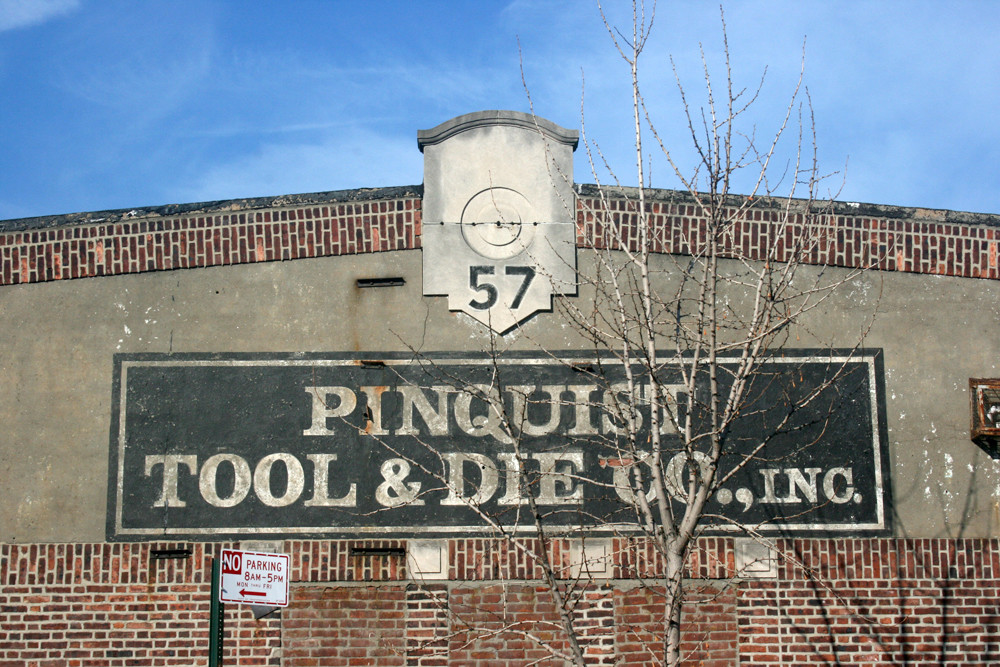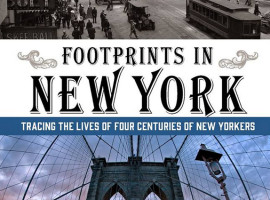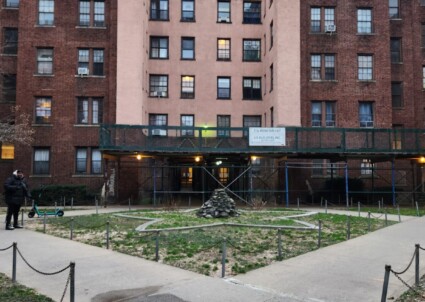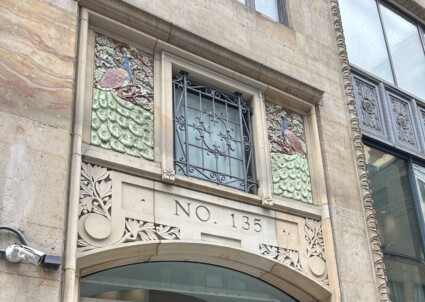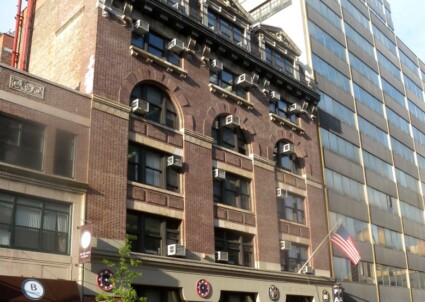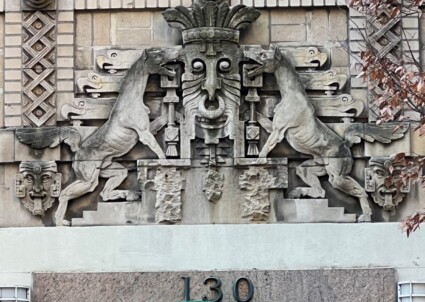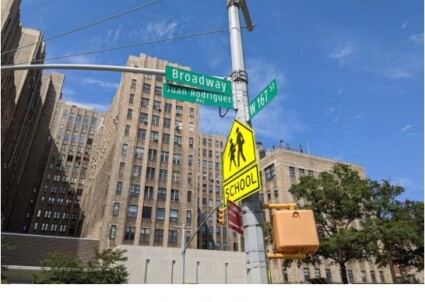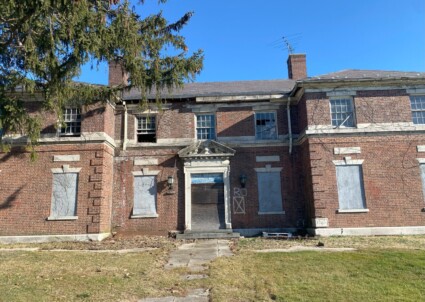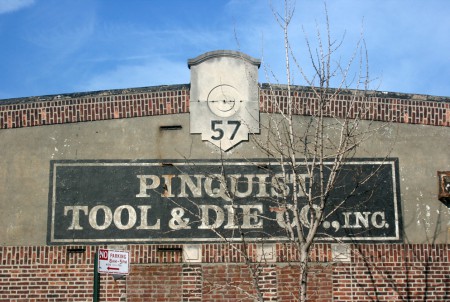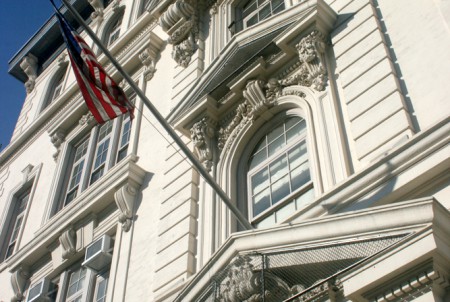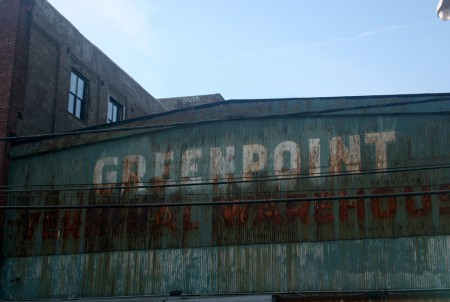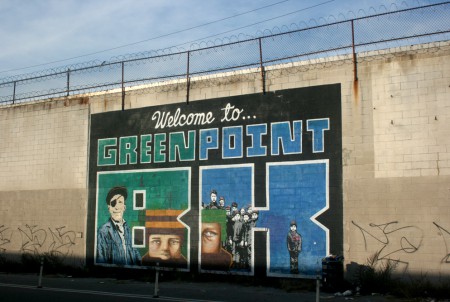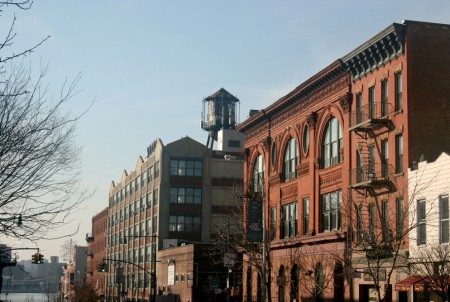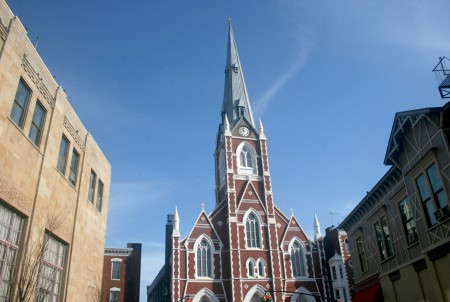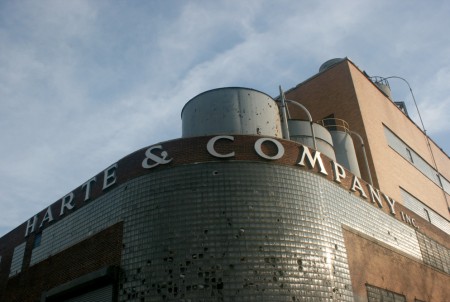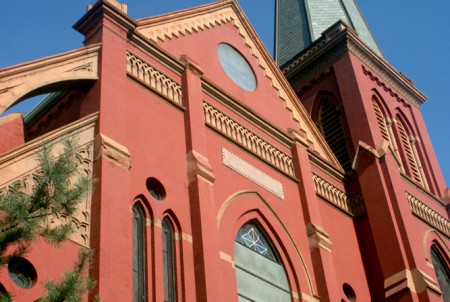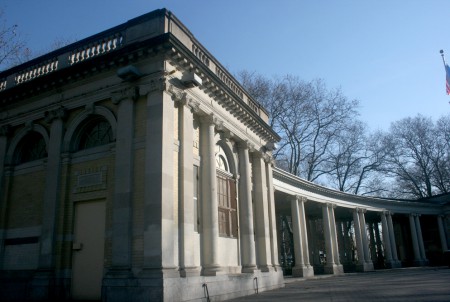Greenpoint, Brooklyn
In 1832, Neziah Bliss (1790-1876) and Eliphalet Nott (1773-1866), business partners in steamship production, began purchasing acres of farmland in Greenpoint and laying out streets. Spurred by a period of economic growth and an influx of European immigrants during the 1850s, more than a dozen shipbuilding firms moved across the river from Manhattan and turned the neighborhood into a major shipbuilding center. Franklin Street, named after Benjamin Franklin, was established as its commercial strip with shops catering to local industries. During the Civil War, the United States Navy commissioned several major iron-clad war ships from the Continental Iron Works, which occupied a seven-acre stretch of the Greenpoint waterfront and employed 1,400 men. The first of these, the Monitor, famously defeated the Merrimac, a Confederate iron-clad ship, in a standoff in Virginia in 1862, just a month after its launch. The Monitor was a source of pride for the neighborhood and is commemorated to this day by a monument in Monsignor McGolrick Park.
While shipbuilding declined after the Civil War, Greenpoint’s other industrial enterprises, which included porcelain making, glass making, and oil refining, continued to thrive. The influential Union Porcelain Works on Eckford Street helped shape American porcelain design. Its owner, Thomas C. Smith, purchased a tract of land on Milton Street in the 1860s and constructed a number of homes there, decorating some of their hearths with blue and white porcelain tiles. It was claimed they were the only tiles manufactured in the United States that could withstand such heat. The Greenpoint Glass Works, another local company, gained such acclaim that Mary Todd Lincoln commissioned table settings for the White House. Greenpoint and Williamsburg also formed a hub for oil refineries.
Greenpoint’s residential development was closely aligned with its industrial growth, as workers’ housing was built inland from the waterfront. Large, elaborate rowhouses were constructed for owners and managers, while modest rowhouses, tenements, and apartment buildings were built for laborers. Much of this construction occurred during the second half of the 19th century, and the neighborhood still displays a variety of architectural styles popular at that time. Early rowhouses contain elements of the Italianate and Greek Revival styles, while later styles include French Second Empire, neo-Grec, Queen Anne and Romanesque Revival. Some of the neighborhood’s later institutional buildings, such as the Greenpoint Savings Bank and the Mechanics and Traders Bank, were designed in the Classical and Renaissance Revival styles. The neighborhood also boasts many fine churches, designed in the Gothic Revival, Victorian Gothic, and Romanesque Revival styles, among others.
There are two historic districts in Greenpoint: the Greenpoint Historic District, located in the neighborhood’s core, and the Eberhard Faber Pencil Company Historic District, which covers roughly one block. A section of the neighborhood is also a National Register of Historic Places District.
